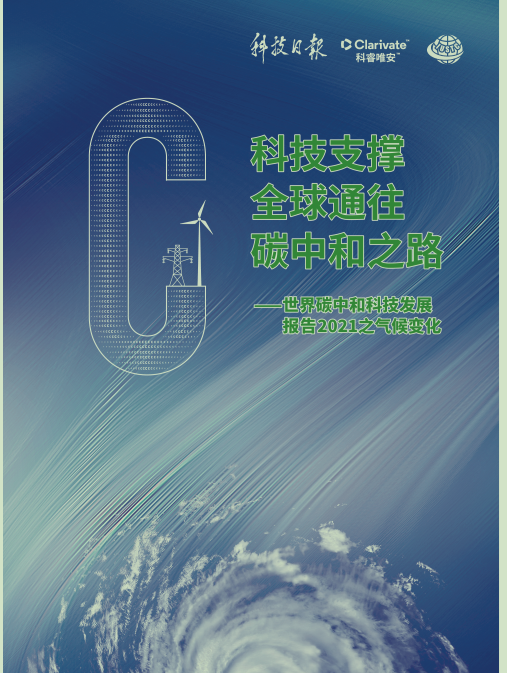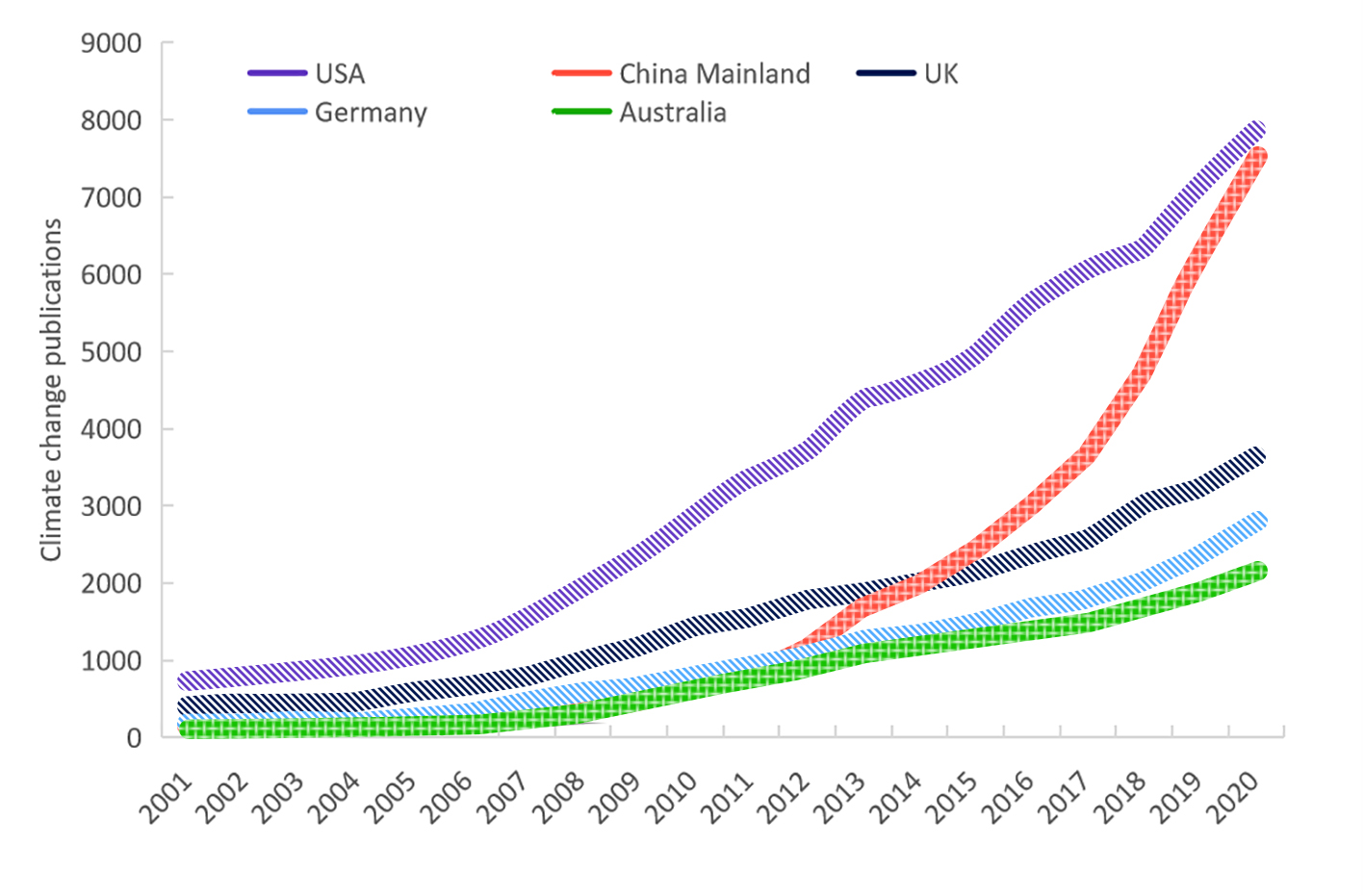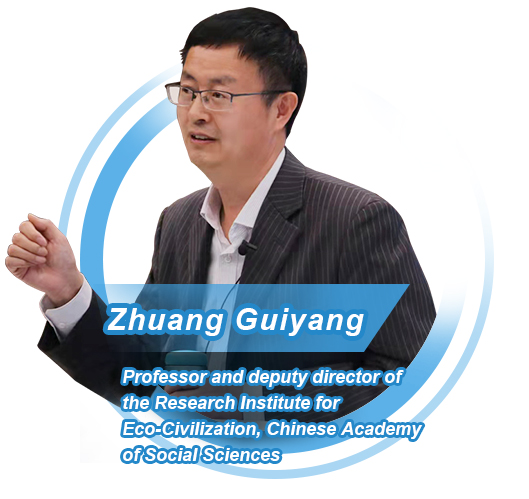Global Efforts to Achieve Carbon Neutrality
During the IUSTC annual conference, a report, titled Science and Technology in Supporting Global Efforts to Achieve Carbon Neutrality, was released by S&T Daily and supported by the data from Clarivate.

The key findings are as follows:
• The research output related to climate change is increasing, and the growth of such research is faster than that of the overall indexed papers in the database;
• The disciplines covered by climate change research have changed;
• The output of climate change publications in the U.S. began to grow rapidly as early as 2006. Relevant research on the Chinese mainland began to increase significantly after 2012 with the highest growth rate;
• The percentage of international collaboration papers has increased rapidly, far exceeding the overall proportion of global international collaboration papers in the same period;
• China and the U.S. are each other's largest partners;
• Half of the Top 10 countries with the most collaboration in climate change research with the Chinese mainland are from Europe. The Chinese mainland is also the second largest partner of the EU27+UK;
• China and ASEAN countries began to collaborate in climate change research since 2003. More collaborations appear in recent ten years, particularly in recent five years.

Top 5 countries/regions with most output in climate change related research. In 2020, the total number of relevant papers in the Chinese mainland ranked second in the world.
Top 10 Research Frontiers in Climate Change
• The number of global insect declines
• Using climate models to study climate change
• Peer-to-Peer (P2P) energy trading
• River or soil forecast based on neural network theory
• Global glacier mass changes
• Decoupling economic growth and carbon emissions
• Efficient electrocatalytic nitrogen fixation under ambient conditions
• Aerosol research
• Research on shared bicycles
• Greenland and Antarctic ice sheet research
A glimpse of experts' views on the report:
Zhong Ping: Global Carbon Neutrality Requires Closer International Cooperation

The COP26 in Glasgow, convened in November 2021, saw a changing phase of the Paris Agreement from rule-making to implementation for the global climate governance—using emerging technologies for climate change mitigation and adaptation to reach the agreed temperature objectives.
It is reported that the U.S., China, the UK, Germany, Australia and Canada are the most productive countries in terms of total number of publications on climate change. The U.S. tops the list; China's publications outnumbered the UK in 2014 after significant increase from 2012. The growth of publications is closely related to China's growing input in scientific research on climate change over the past ten years.
With a determined goal, we should make more efforts on research and development of carbon neutrality technologies as solutions, and make more interdisciplinary and cross- sector international sci- tech cooperation. As such, we'll quicken the green and low- carbon transition globally at a lower cost within a shorter period of time.
Zhuang Guiyang: Technology Empowers 'Dual Carbon' Goals

Climate issues need multilateral cooperation. It must be made clear that the natural risks brought by climate change are featured by a systematic and spatially differentiated increase, while atmospheric control has obvious public benefits.
Science and technology is one of the core and key issues of global climate cooperation. Global climate governance under the multilateralism framework, which promotes green and low-carbon technology innovation and application deployment, will become an important part of global climate cooperation. The research and development, deployment and large-scale popularization and application of major sci-tech innovations in key areas determine the global climate governance capacity.
The mid- and long- term emission reduction technologies focus on fossil energy, industry, construction, transportation, energy storage, etc. The strategic role of deep carbon emission reduction or zero emission technology, negative emission technology and geoengineering technology in the future global emission reduction framework has attracted much attention.
Zheng Dawei: Supporting Role of Adaptation Actions to Be Maximized

It has become the consensus of the international community that mitigation and adaptation, as two basic countermeasures to meet the challenge of climate change, are equally important and cannot be neglected.
Developed countries, which bear major historical responsibilities, should take the lead in substantially reducing carbon emissions. Most developing countries should vigorously carry out actions to adapt to climate change while making their own contributions to emission reduction.
In the past 20 years, substantial progress has been made in theoretical research and technology research, and development of adaptation to climate change at home and abroad. In China, there are a number of examples of adapting to climate change, such as solving climate poverty, protecting fragile ecosystems, developing climate- intelligent agriculture, and solving the problem of unstable frozen soil subgrade while building the Qinghai-Tibet Railway.
Huang Cunrui: Collaborative Governance Between 'Dual Carbon' Goals and Human Health

Human society is a community with a shared future. It is difficult for any country in the world to be immune to the climate crisis. The public health and biosafety risks caused by climate change are global and public, which requires the cooperation of governments and the scientific community.
We need to fully understand and pay attention to the connections between climate policy, air quality, lifestyle and public health, so as to provide key catalysts for climate change mitigation and adaptation actions.
In view of the high public attention to health, it is urgent to integrate health into the climate decision- making process, and fully consider the potential impact and synergetic benefits of climate policies and systems on health. In this way, we'll develop a more cost- effective and socially acceptable technological path.

